Solar heating of a private house: options and device diagrams
The use of "green" energy supplied by natural elements can significantly reduce utility costs. For example, having arranged solar heating of a private house, you will supply low-temperature radiators and underfloor heating systems with virtually free coolant. Agree, this is a savings.
You will learn all about “green technologies” from our article. With our help, you can easily figure out the varieties of solar installations, how to arrange them and the specifics of operation. Surely you will be interested in one of the popular options that are intensively working in the world, but not too popular with us so far.
In the review presented to your attention, the design features of the systems are analyzed, the connection diagrams are described in detail. An example of calculating a solar heating circuit to assess the realities of its construction is given. To help independent masters, photo collections and videos are attached.
The content of the article:
Green heat technologies
1 m average2 The surface of the earth receives 161 watts of solar energy per hour. Of course, at the equator, this figure will be many times higher than in the Arctic. In addition, the density of solar radiation depends on the time of year.
In the Moscow region, the intensity of solar radiation in December-January differs from May-July by more than five times. However, modern systems are so effective that they can work almost everywhere on earth.
Task of use solar radiation energy with maximum efficiency is solved in two ways: direct heating in thermal collectors and solar photovoltaic batteries.Solar panels first convert the energy of the sun's rays into electricity, then transmit it through a special system to consumers, such as an electric boiler.
Heat collectors, heated by the action of sunlight, heat the coolant of heating systems and hot water supply.
Thermal collectors come in several forms, including open and closed systems, flat and spherical structures, hemispherical collectors, concentrators and many other options. Thermal energy received from solar collectors is used to heat hot water or a heating medium.
A wide range of industries produces manifold systems for inclusion in an independent heating network. However, the simplest option for a summer residence is easy to do with your own:
Despite the clear progress in developing solutions for the collection, storage and use of solar energy, there are advantages and disadvantages.
Efficient use of solar energy
The most obvious benefit of using solar energy is its general availability. In fact, even in the most gloomy and cloudy weather, solar energy can be collected and used.
The second plus is zero emissions. In fact, this is the most environmentally friendly and natural form of energy. Solar panels and collectors do not make noise. In most cases, they are installed on the roofs of buildings without occupying the usable area of a suburban area.
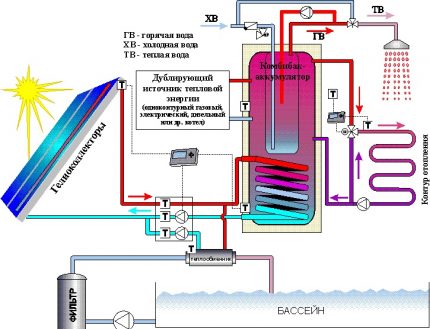
The disadvantages associated with the use of solar energy are the inconstancy of illumination. In the dark, there is nothing to collect, the situation is aggravated by the fact that the peak of the heating season falls on the shortest daylight hours of the year. It is necessary to monitor the optical cleanliness of the panels, minor pollution sharply reduces the efficiency.
In addition, it cannot be said that the operation of the system on solar energy is completely free, there are constant costs for depreciation of equipment, the operation of the circulation pump and control electronics.
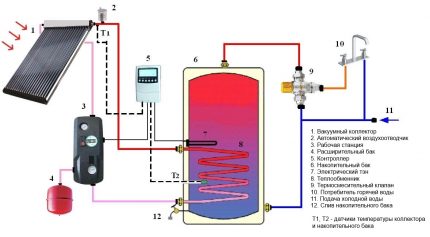
Open solar collectors
An open solar collector is a system of tubes that is unprotected from external influences, through which a heat carrier heated directly by the sun circulates.
Water, gas, air, antifreeze are used as a heat carrier. The tubes are either mounted on a supporting panel in the form of a coil, or are connected in parallel rows to the outlet pipe.
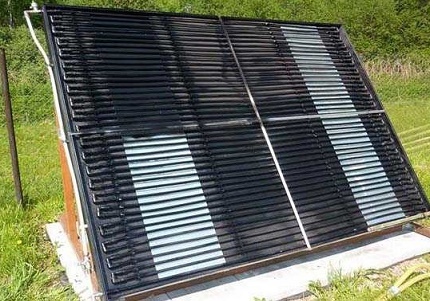
Open collectors usually have no insulation. The design is very simple, therefore it has a low cost and is often made independently.
Due to the lack of insulation, they practically do not preserve the energy received from the sun, and are characterized by low efficiency. They are mainly used in the summer to heat water in pools or summer showers.
They are installed in sunny and warm regions, with small differences in ambient temperature and heated water. They work well only in sunny, calm weather.

Tubular manifolds
Tubular solar collectors are assembled from separate tubes along which water, gas or steam runs. This is one of the varieties of open heliosystems. However, the coolant is already much better protected from external negative. Especially in vacuum installations, arranged on the principle of thermoses.
Each tube is connected to the system separately, parallel to each other. If one tube fails, it is easy to replace it with a new one. The entire structure can be assembled directly on the roof of the building, which greatly facilitates installation.
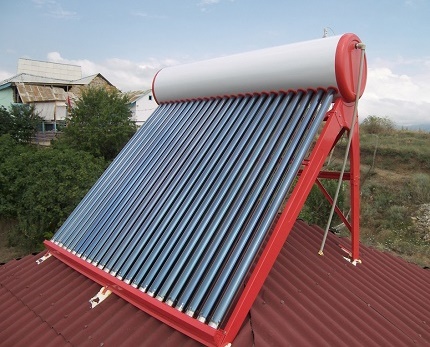
A weighty plus of tubular solar collectors is the cylindrical shape of the main elements, due to which solar radiation is captured all day long without the use of expensive tracking systems for the movement of the sun.
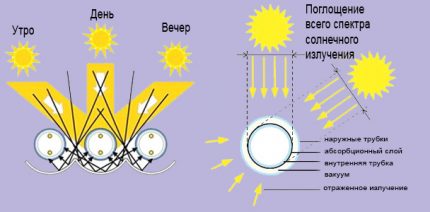
According to the design of the tubes, feather and coaxial solar collectors are distinguished.
The coaxial tube is a Dyayur vessel or a familiar thermos. Made of two flasks between which air is pumped out. A highly selective coating that effectively absorbs solar energy is applied to the inner surface of the inner bulb.
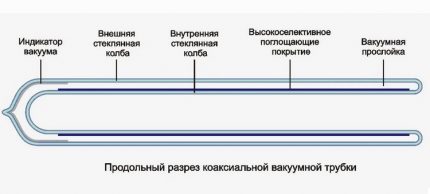
Thermal energy from the internal selective layer is transferred to a heat pipe or internal heat exchanger from aluminum plates. At this stage, unwanted heat loss occurs.
The feather tube is a glass cylinder with a feather absorber inserted inside.

For good thermal insulation, air is pumped out of the tube. Heat transfer from the absorber occurs without loss, so the efficiency of the feather tubes is higher.
According to the method of heat transfer, there are two systems: once-through and with a heat pipe. The thermotube is a sealed container with a volatile liquid.
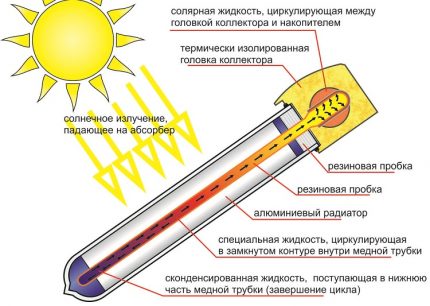
Inside the thermotube there is a volatile liquid that absorbs heat from the inside wall of the flask or from the feather absorber. Under the influence of temperature, the liquid boils and rises in the form of steam. After the heat is transferred to the heating medium or hot water supply, the steam condenses into a liquid and flows down.
As a volatile liquid, water is often used at low pressure. In a direct-flow system, a U-shaped tube is used, through which water or a heating medium circulates.
One half of the U-shaped tube is designed for cold coolant, the second removes the heated one. When heated, the coolant expands and enters the storage tank, providing natural circulation. As in the case of systems with thermotube, the minimum angle of inclination should be at least 20⁰.
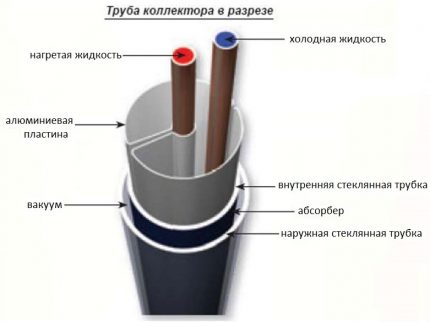
Direct-flow systems are more efficient since they immediately heat the coolant. If the systems of solar collectors are planned for use all year round, then special antifreezes are pumped into them.
The use of tubular solar collectors has several advantages and disadvantages. The design of the tubular solar collector consists of the same elements, which are relatively easy to replace.
Advantages:
- low heat loss;
- ability to work at temperatures up to -30⁰С;
- effective productivity throughout the daylight hours;
- good performance in areas with a temperate and cold climate;
- low windage, justified by the ability of tubular systems to pass air masses through itself;
- the possibility of producing high temperature coolant.
Structurally, the tubular structure has a limited aperture surface.
It has the following disadvantages:
- not capable of self-cleaning from snow, ice, hoarfrost;
- high price.
Despite the initially high cost, tubular collectors pay off faster. They have a long service life.

Flat Closed Systems
The flat collector consists of an aluminum frame, a special absorbing layer - an absorber, a transparent coating, a pipeline and a heater.
As an absorber, blackened sheet copper is used, which is characterized by thermal conductivity ideal for creating solar systems. When the solar energy is absorbed by the absorber, the solar energy received by it is transferred to the coolant circulating along the tube system adjacent to the absorber.
On the outside, the closed panel is protected by a transparent coating. It is made of shockproof tempered glass having a passband of 0.4-1.8 microns. This range accounts for the maximum solar radiation. Shockproof glass provides good protection against hail. On the back, the entire panel is reliably insulated.
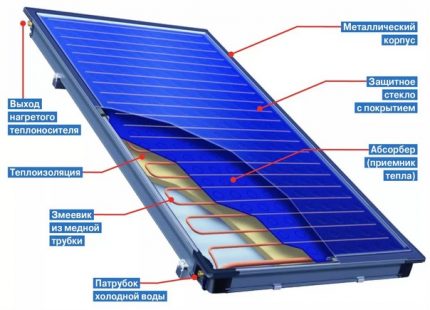
The list of benefits of closed flat panels includes:
- simplicity of design;
- good performance in regions with a warm climate;
- the ability to install at any angle with devices for changing the angle of inclination;
- the ability to self-clean from snow and hoarfrost;
- low price.
Flat solar collectors are especially advantageous if their application is planned at the design stage. The service life of quality products is 50 years.
The disadvantages include:
- high heat loss;
- heavy weight;
- high windage when placing panels at an angle to the horizon;
- performance limitations with temperature differences of more than 40 ° C.
The scope of closed collectors is much wider than open-type solar installations. In the summer, they are able to fully satisfy the need for hot water. On cool days, not included by the public utilities during the heating season, they can work instead of gas and electric heaters.
To those who wish make a solar collector with your own hands for a heating device in the country, we suggest that you familiarize yourself with proven schemes and step-by-step assembly instructions.
Comparison of the characteristics of solar collectors
The most important indicator of a solar collector is efficiency. The useful performance of different in design solar collectors depends on the temperature difference. At the same time, flat collectors are much cheaper than tubular ones.
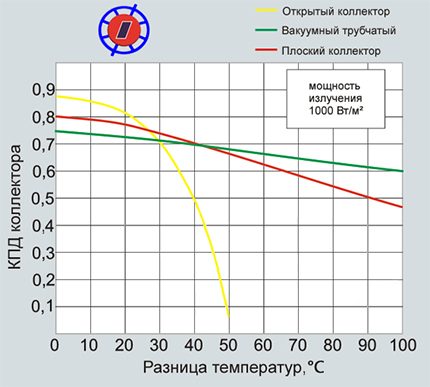
When choosing a solar collector, it is worth paying attention to a number of parameters showing the efficiency and power of the device.
There are several important characteristics for solar collectors:
- adsorption coefficient - shows the ratio of absorbed energy to total;
- emission factor - shows the ratio of transmitted energy to absorbed;
- total and aperture area;
- Efficiency.
Aperture area is the working area of the solar collector. In a flat collector, the aperture area is maximum. The aperture area is equal to the area of the absorber.
Ways to connect to the heating system
Since solar powered devices cannot provide a stable and round-the-clock power supply, a system resistant to these shortcomings is needed.
For central Russia, solar devices cannot guarantee a steady supply of energy, therefore they are used as an additional system. Integration into the existing heating and hot water system is different for the solar collector and solar panel.
Water collector circuit
Different connection systems are used depending on the purpose of using the heat collector. There may be several options:
- Summer option for hot water
- Winter option for heating and hot water
The summer option is the simplest and can do without even circulation pumpusing natural water circulation.
Water is heated in the solar collector and due to thermal expansion enters the storage tank or boiler. In this case, natural circulation occurs: cold water is sucked into the place of hot water from the tank.
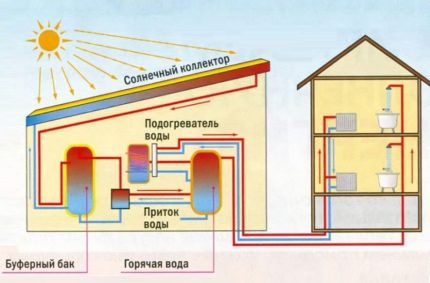
Like any system based on natural circulation, it does not work very efficiently, requiring the observance of the necessary biases. In addition, the storage tank must be higher than the solar collector. To keep the water as long as possible the hot tank must be carefully insulated.
If you want to really achieve the most efficient operation of the solar collector, the connection scheme is complicated.
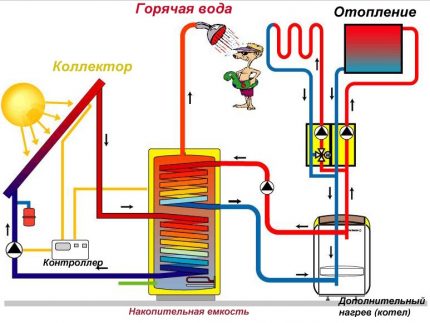
Non-freezing coolant circulates through the solar collector system. Forced circulation is provided by a pump controlled by a controller.
The controller controls the operation of the circulation pump based on the readings of at least two temperature sensors. The first sensor measures the temperature in the storage tank, the second - on the supply pipe of the hot heat carrier of the solar collector.
As soon as the temperature in the tank exceeds the temperature of the coolant, in the collector, the controller turns off the circulation pump, stopping the circulation of the coolant through the system. In turn, when the temperature in the storage tank drops below a predetermined value, the heating boiler is switched on.
With a new word and an effective alternative to solar collectors with a coolant, steel systems with vacuum tubes, with the principle of operation and devices of which we propose to get acquainted.
Solar circuit
It would be tempting to apply a similar solar connection diagram to the power grid, as is the case in the case of the solar collector, accumulating the energy received per day. Unfortunately, it is very expensive to create a battery pack of sufficient capacity for the private house power system. Therefore, the connection diagram is as follows.
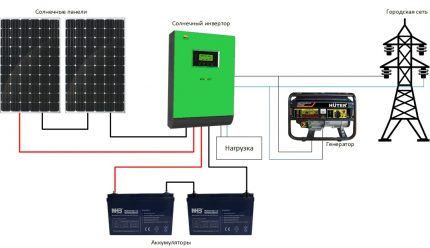
From solar panels, the charge goes to the charge controller, which performs several functions: it provides constant recharging of the batteries and stabilizes the voltage. Further, the electric current is supplied to the inverter, where the conversion of direct current 12V or 24V to alternating single-phase current 220V.
Alas, our electric networks are not adapted to receive energy; they can work only in one direction from a source to a consumer. For this reason, you will not be able to sell the produced electricity or at least make the meter spin in the opposite direction.
The use of solar panels is beneficial in that they provide a more versatile form of energy, but at the same time they can not be compared in efficiency with solar collectors. However, the latter do not have the ability to accumulate energy, unlike solar photovoltaic batteries.
Example for calculating the required power
When calculating the required power of the solar collector, it is very often erroneous to make calculations based on the incoming solar energy in the coldest months of the year.
The fact is that in the remaining months of the year the entire system will constantly overheat. The temperature of the coolant in the summer at the exit of the solar collector can reach 200 ° C with heating of steam or gas, 120 ° C of antifreeze, 150 ° C of water. If the coolant boils, it will partially evaporate. As a result, it will have to be replaced.
Manufacturers recommend starting from the following figures:
- providing hot water supply no more than 70%;
- providing a heating system of not more than 30%.
The rest of the necessary heat should be generated by standard heating equipment. Nevertheless, with such indicators per year, an average of about 40% is saved on heating and hot water supply.
The power generated by one tube of the vacuum system depends on the geographical location. The rate of solar energy falling per year at 1 m2 land is called insolation.
Knowing the length and diameter of the tube, you can calculate the aperture - the effective absorption area. It remains to apply the absorption and emission factors to calculate the capacity of one tube per year.
Calculation example:
The standard length of the tube is 1800 mm, effective - 1600 mm. Diameter 58 mm. Aperture - a shaded area created by the tube. Thus, the area of the shadow rectangle is:
S = 1.6 * 0.058 = 0.0928m2
The efficiency of the average tube is 80%, solar insolation for Moscow is about 1170 kWh / m2 in year. Thus, one tube will produce per year:
W = 0.0928 * 1170 * 0.8 = 86.86kW * h
It should be noted that this is a very rough estimate. The amount of generated energy depends on the orientation of the installation, angle, average annual temperature, etc.
With all kinds alternative energy sources and ways to use them you can find in the article.
Conclusions and useful video on the topic
Video # 1. Demonstration of the action of the solar collector in winter:
Video # 2. Comparison of different models of solar collectors:
Throughout its own existence, humanity is consumed more and more energy every year. Attempts to use free solar radiation have been made for a long time, but only recently it has become possible to effectively use the sun in our latitudes. There is no doubt that the future lies with solar systems.
Do you want to report interesting features in the organization of solar heating of a country house or cottage? Please write comments in the block below. Here you can ask a question, leave a photo with a demonstration of the system assembly process, share useful information.

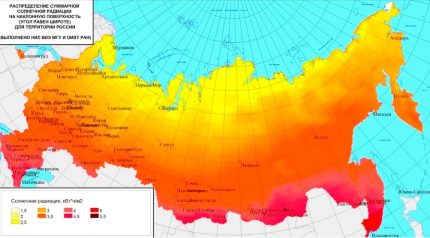
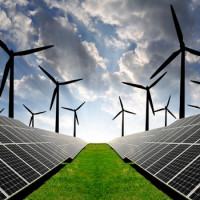 Autonomous power supply for a private house: an overview of the best local solutions
Autonomous power supply for a private house: an overview of the best local solutions 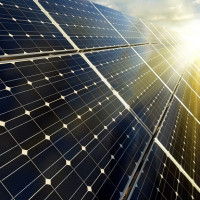 Alternative energy for the home: a review of non-standard energy sources
Alternative energy for the home: a review of non-standard energy sources  DIY eco-house construction: technological principles and schemes
DIY eco-house construction: technological principles and schemes  Do-it-yourself alternative energy for your home: a review of the best eco-technologies
Do-it-yourself alternative energy for your home: a review of the best eco-technologies 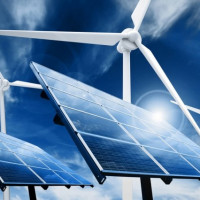 Alternative sources of heating for a country house: a comparative overview of eco-systems
Alternative sources of heating for a country house: a comparative overview of eco-systems 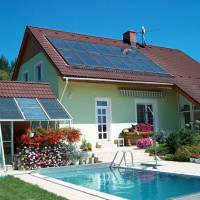 Solar energy as an alternative source of energy: types and characteristics of solar systems
Solar energy as an alternative source of energy: types and characteristics of solar systems  How much does it cost to connect gas to a private house: the price of organizing gas supply
How much does it cost to connect gas to a private house: the price of organizing gas supply  The best washing machines with dryer: model rating and customer tips
The best washing machines with dryer: model rating and customer tips  What is the color temperature of light and the nuances of choosing the temperature of the lamps to suit your needs
What is the color temperature of light and the nuances of choosing the temperature of the lamps to suit your needs  Replacement of a geyser in an apartment: replacement paperwork + basic norms and requirements
Replacement of a geyser in an apartment: replacement paperwork + basic norms and requirements
Recently, they began to think about installing solar panels in the house. Firstly, in order to save money, as it is shocked by gas and electricity bills, especially in winter. Secondly, we need to think about the environment. Everything is beautifully written in the article, but this is for those who are at least a little versed in technical issues. We are a complete zero. Explain to me in Russian. We have a two-story house, 120 squares each floor. We live in Bashkiria, where there are few sunny days, and in winter it is cloudy all the time. What kind of batteries do we need and how much will it pour out? How long will they pay off? And will solar panels save us in winter? After all, we spend a lot of gas and electricity in the winter, and in the summer we don’t seem to need them. So maybe you shouldn’t even bother, but continue to pay crazy money for gas and electricity?
First of all, Svetlana, insulate your house, make it a kind of thermos. That is, provide thermal insulation for the walls, windows, roofing system. Only then think of an alternative to gas and electricity.
I am not ready to switch to solar heating. This is only suitable for those who live in warm places, where the summer and the nights are warm all year round. In the Russian middle zone from thermal batteries, there is little sense. It is only possible to combine conventional heating in winter and the use of solar energy in summer. Then there will be at least some savings on utilities, but still the effect is partial, you cannot heat the house completely with solar energy.
You can clarify your coordinates (city, village), I have a similar situation and question ..
And I'm ready to switch to combined heating. This article discusses the general principles of building solar heating systems and hybrid. You can also use wind energy to additionally heat the heat storage tank. A storage tank is a very powerful thermal energy storage device; not a single electric battery can be compared in terms of the amount of energy stored. And in order to empty it from accumulated energy, it is advisable to use a heat pump.
You are right, Gregory. Combined heating is ideal. We use solar collectors and a gas boiler, it turns out to be a good save.